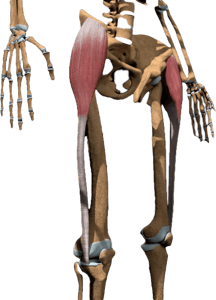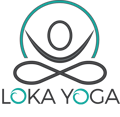Last updated on January 27th, 2023 at 02:36 pm
Hip flexor muscles and yoga – what should you know
If you have never met with the term hip flexor muscles, you should know that these are the muscles that help you flex your hips. For example, they help you whenever you wish to bring the knee close to your chest.
From a flexibility point of view, there are many ways you can activate and stretch the hip flexor muscle groups. One of the best ways to do that is through practising yoga. Today we are looking into this subject, and answering the question of how to incorporate yoga into your daily lifestyle and give these groups of muscles the stretch they need!
First of all, let’s take a look at the different hip flexor muscles:
- Psoas (major) – this is a deep hip flexor that manages to connect the lumbar vertebrae to the top of the femur. It is a muscle that is active whenever a person is sitting. However, it can become extremely tight if you are sitting a lot, resulting in a lot of pain.

- Iliacus – this muscle links to the top of the femur and is connected to the top of the hip. Functions the same as the previous muscle group, and it can get incredibly tight from sitting a lot. When that happens, it can shorten – creating tension and pain. It can even develop some knots. In that case, some massage tools can assist in relieving this pain.

- Rectus femoris – these muscles have an interesting anatomic layout. They start from the hips and connect to the knee. Whenever you have pain in the front part of your legs, this is why. If you want to move the rectus femoris, you must extend the leg. This hip flexor muscle group helps you walk, kick a ball, and so much more.

- Tensor fasciae latae – this hip flexor muscle group is located on the outer part of the body, and its main function is maintaining the body’s balance. It starts near the hip bone and goes down to the outer knee, down the thigh. This is the muscle group that keeps you balanced whenever you try to stand on one leg. People who run often experience tightness in these muscles. But, one can get some relief from the tension by getting a massage.

- Pectineus – The pectineus muscle acts to flex the hip, and is also a powerful adductor of the thigh, which means that it helps to bring the thigh back towards the midline of the body. This is often the muscle injured when you pull a groin muscle.

- Sartorius – the final muscle group is the Sartorius. It is the longest muscle in the body and starts from the hip bone, right across the thigh, and goes down to the inner knee (the tibia). These muscles activate whenever you want to kick across the body.
After learning about the main hip flexor muscle, let’s look at some signs and symptoms you should look out for.

What does it mean to have tight hip flexors?
Tight hip flexors refer to a condition where the muscles that flex the hip joint have become shortened and are unable to fully extend the hip.
Tight hip flexors can be caused by a variety of factors, including prolonged sitting, poor posture, and lack of regular stretching or exercise. When we sit for long periods of time, the hip flexors are in a shortened position, which can cause them to become tight. Additionally, poor posture, such as slouching or sitting with the legs crossed, can also contribute to tight hip flexors.
Symptoms of tight hip flexors can include pain in the hip and lower back, limited range of motion in the hip joint, and difficulty with tasks such as climbing stairs or standing up from a seated position.
Treatment for tight hip flexors may include stretching exercises to lengthen the hip flexors and improve flexibility, strengthening exercises to improve the strength of the hip muscles, and physical therapy to address any underlying issues or imbalances that may be contributing to the tightness. In addition, avoiding prolonged sitting and practicing good posture can also help to prevent tight hip flexors.
It’s important to note that having tight hip flexors is a common problem, but it’s not always harmful, but if you’re experiencing pain or limited range of motion, it’s important to address it.
What does it mean to have flexible hip flexors?
Having flexible hip flexors means that the muscles that flex the hip joint are able to fully extend and move through a wide range of motion. Flexible hip flexors allow for normal movement patterns, such as walking, running, and jumping, and can help to improve balance and stability.
Flexible hip flexors are important for overall mobility and can help to reduce the risk of injury. Having flexible hip flexors can also help to improve posture, as well as reduce pain and tension in the hip and lower back.
To maintain flexibility in the hip flexors, it’s important to engage in regular stretching and strengthening exercise, such as yoga, Pilates, or other types of strength and flexibility training. It’s also important to avoid prolonged sitting and practice good posture to prevent the hip flexors from becoming tight.
It’s important to note that flexibility can vary from person to person, and it’s also possible to have overly flexible hip flexors which can also lead to problems, for example, increased risk of injury or instability.

Keep your muscles healthy and flexible with yoga
The power of yoga has spanned over centuries, and it is why it’s still being practised today. For anyone still on the fence about whether they should try doing some yoga to improve their overall health, think about it this way – yoga can help with lower back pain and spine extension, and can be the best hip opener you will ever need!
In addition, we are providing some of the best poses that will keep you happy and healthy!
- Butterfly stretch – this is a gentle pose that can do wonders for your inner thighs. All you need to do is sit on the floor and extend your spine as much as possible. Bend both your knees and put your soles together. Either stand here or extend the arms to make your hips even more flexible.


- Yogi squat – the name is self-explanatory, but regarding this asana, the level is higher. While standing still, bring your heels toward each other, put your hands in prayer, and squat as you place the elbows inside your inner knees. Press as much as your body allows and stay in that position for thirty seconds.
- Half pigeon – a moderate pose that can do wonders for your hip flexor muscles located on the outer thighs. All you need to do is stretch your leg forward, bend it, and rest on top of it while your other leg rests extended behind you. Drop as low as you can and hold that pose for at least 30 seconds.


We hope this hip flexor muscle information has been helpful to you. Don’t forget to try these poses to elevate your health! If you liked this subject, feel free to read more blogs here.
